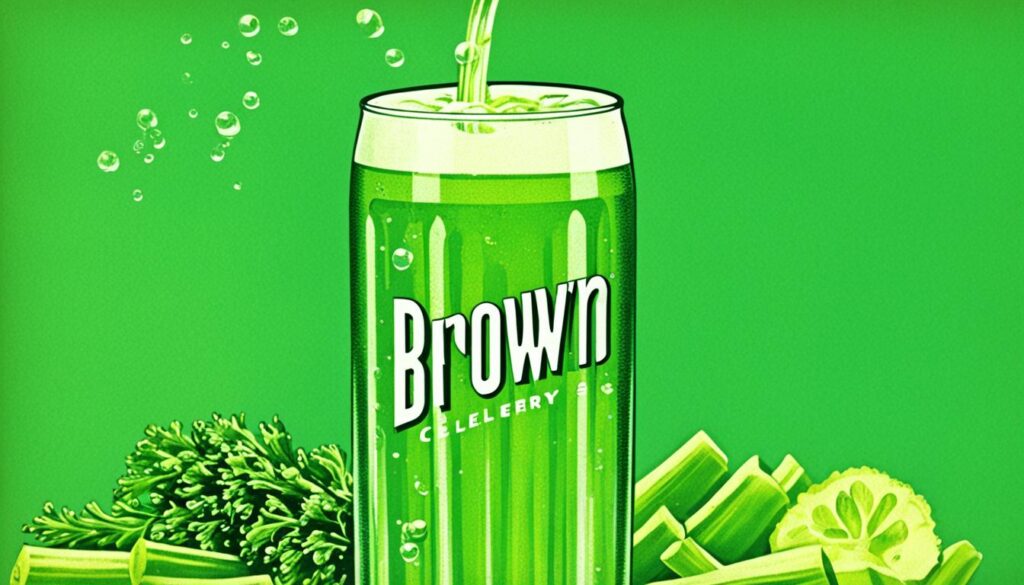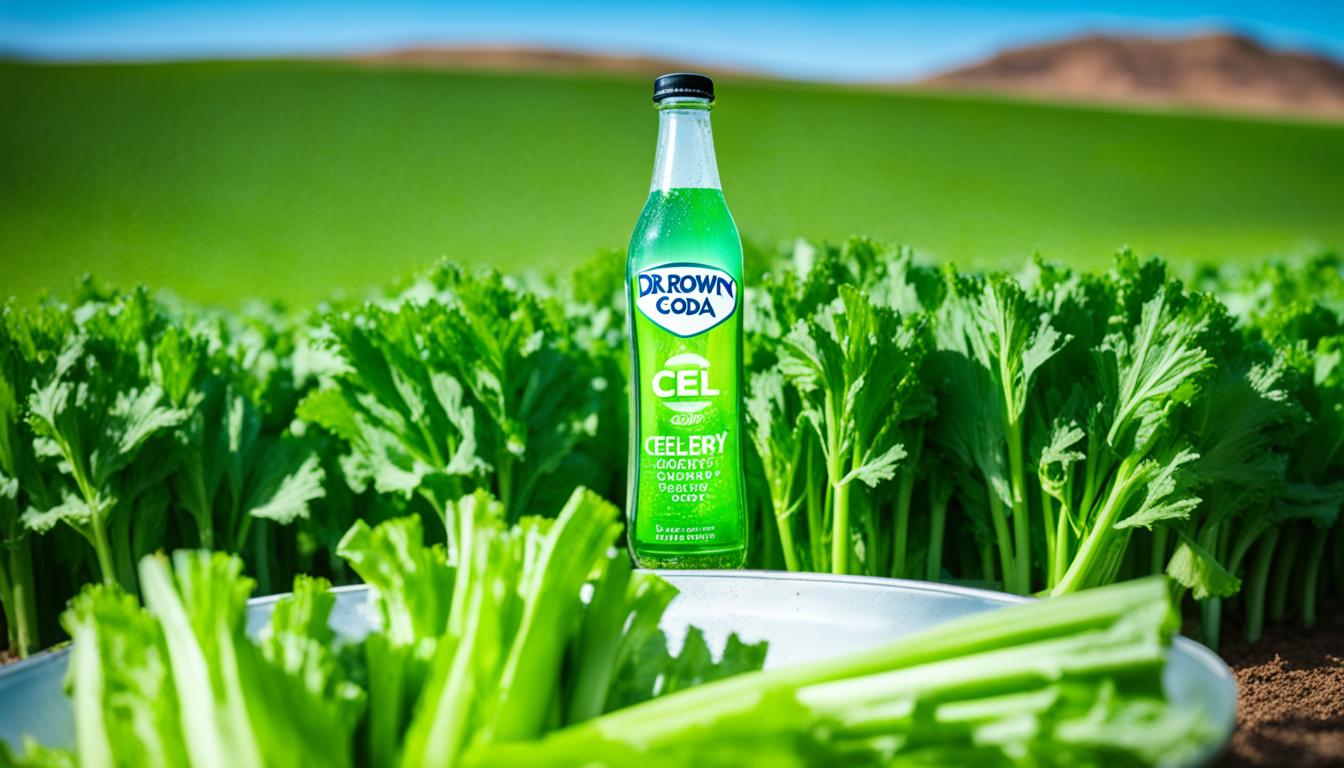Have you ever wondered how a soda made from celery could become a beloved beverage with a cult following? Well, get ready to uncover the captivating history of Dr. Brown’s Cel-Ray Celery Soda, a unique drink that has stood the test of time.
From its origins as a medicinal celery tonic created by a certain Dr. Brown in the late 1800s, this soda has a fascinating journey that will leave you in awe. Join us as we dive into the history of Dr. Brown’s Cel-Ray and explore the cultural significance behind its enduring popularity.
Key Takeaways:
- Dr. Brown’s Cel-Ray Celery Soda has a rich and unique history that traces back to the late 1800s.
- The soda was initially marketed as “Celery Tonic” but had to be renamed to Cel-Ray due to objections from the FDA.
- Cel-Ray gained popularity for its botanical taste and its association with the Jewish deli experience.
- Despite the decline of Jewish delicatessens, Cel-Ray remains a beloved vintage beverage with a dedicated cult following.
- In recent years, celery soda has seen a resurgence in popularity as people rediscover the power of botanical flavors.
The Rise of Celery Soda and the Celery Craze
During the 19th and early 20th centuries, celery was considered a superfood and gained popularity as a medicinal ingredient. In Victorian England, celery was believed to have various health benefits and was even used to cure insomnia, malaria, and headaches. The celery craze extended to the soda industry, with several companies producing celery sodas or tonics. However, Dr. Brown’s Cel-Ray was the only one to survive and develop a loyal following, particularly among Jewish communities in New York.
The celery craze of the 19th and early 20th centuries had a significant impact on the soda industry. As celery gained recognition for its supposed health benefits, soda manufacturers saw an opportunity to capitalize on the celery craze by incorporating the flavor into their beverages.
“Dr. Brown’s Cel-Ray stands as a testament to the enduring popularity of celery soda, outlasting its numerous competitors to become a beloved vintage drink.”
One of these pioneering celery sodas was Dr. Brown’s Cel-Ray. Introduced in the late 19th century, Dr. Brown’s Cel-Ray quickly gained a following, particularly among Jewish immigrants in New York City. With its unique celery flavor and effervescence, Cel-Ray offered a refreshing twist on traditional sodas.
The soda’s popularity can be attributed not only to its distinct taste but also to its association with the Jewish deli experience. Cel-Ray became a staple on the menus of Jewish delicatessens, where it was often enjoyed alongside classic deli dishes such as pastrami sandwiches and matzo ball soup.
Celery Soda Competitors
While Dr. Brown’s Cel-Ray emerged as the dominant celery soda brand, it faced competition from other soda manufacturers attempting to jump on the celery craze bandwagon. However, Dr. Brown’s Cel-Ray’s unique flavor profile and the loyalty it garnered from the Jewish community helped it withstand the test of time.
Here is a comparison of Dr. Brown’s Cel-Ray and some of its celery soda competitors:
| Brand | Flavor | Popularity |
|---|---|---|
| Dr. Brown’s Cel-Ray | Celery-infused with a hint of botanicals | Popular among Jewish communities, remained a vintage favorite |
| Greenie’s Celery Soda | Strong celery flavor, slightly bitter | Short-lived, failed to capture widespread appeal |
| Crushed Stalks | Mild celery taste, sweetened with cane sugar | Limited availability, niche following |
As seen in the table, Dr. Brown’s Cel-Ray stood out for its unique flavor combination and its enduring popularity among Jewish communities.
Despite the decline of Jewish delicatessens in recent decades, Dr. Brown’s Cel-Ray has managed to maintain a dedicated following. The soda’s nostalgic charm and distinct taste continue to attract both longtime fans and curious newcomers.
The Appeal of Cel-Ray Soda
Cel-Ray soda gained popularity due to its unique flavor profile and its association with the Jewish deli experience. The effervescence and botanical taste of Cel-Ray complemented the rich, salty dishes typically served in delis, such as pastrami and brisket. Celery also had cultural significance in Eastern European Jewish cuisine, which further contributed to its appeal among Jewish diners. The soda became a staple of delicatessen menus and earned the nickname “Jewish Champagne.”
| Reasons for Cel-Ray Soda’s Appeal | Delicatessen Experience | Cultural Significance |
|---|---|---|
| Unique Flavor Profile | The effervescence and botanical taste of Cel-Ray complemented the rich, salty dishes typically served. | The cultural significance of celery in Eastern European Jewish cuisine contributed to its appeal among Jewish diners. |
| Complementary Pairings | The distinct flavor of Cel-Ray was a perfect accompaniment to deli classics like pastrami and brisket. | Cel-Ray soda became associated with the Jewish deli experience, enhancing its appeal among deli-goers. |
| Nickname | The soda earned the nickname “Jewish Champagne,” highlighting its popularity in Jewish communities. |
Cel-Ray’s Resilience and Cult Following
Despite the decline of Jewish delicatessens in the 1980s, Dr. Brown’s Cel-Ray soda managed to not only survive but also maintain a dedicated cult following. The brand’s unwavering loyalty to delis and its deep-rooted association with the Jewish community have solidified its place in culinary history.
While Cel-Ray is no longer the best-selling product for Dr. Brown’s, it continues to hold a special place in the hearts of those who have fond childhood memories of sipping the soda with their deli meals. The unique blend of flavors offered by Cel-Ray creates a nostalgic connection for many, evoking the essence of old-fashioned deli experiences.
In addition to its popularity amongst aficionados of Jewish cuisine, Cel-Ray has also made appearances in popular culture, further cementing its status as a beloved vintage beverage. Whether it’s mentioned in movies or referenced in television shows, Cel-Ray has become a recognizable symbol of the past.
“Drinking Cel-Ray is like stepping back in time, to when delis were bustling and the sound of clinking glasses filled the air. It’s a taste of nostalgia that transports you to a bygone era.”
Dr. Brown’s Cel-Ray soda has stood the test of time, capturing the hearts of those who appreciate its unique flavor and historical significance. It remains a symbol of resilience and cultural heritage, beloved by many as a testament to the enduring power of a vintage beverage.
Celery Soda’s Modern Resurgence
In recent years, there has been a renewed interest in botanical flavors and unique soda varieties. People are rediscovering the power of natural ingredients and seeking out beverages that offer something different from the usual carbonated options. One particular soda that is experiencing a comeback is celery soda.

Celery soda has a rich history that dates back to the late 1800s, and it is now being embraced by both traditional and modern beverage enthusiasts. In response to the growing demand, some restaurants and bars have started serving Cel-Ray soda, either as a standalone beverage or as a unique mixer in cocktails. This resurgence has also prompted independent companies like Saul’s Restaurant & Deli and Savouré to introduce their own versions of celery soda, catering to the evolving tastes of consumers.
The popularity of celery juice as a detox drink may have also played a part in the resurgence of celery-flavored beverages. As more people discover the health benefits of celery, they are exploring different ways to incorporate its natural goodness into their diets. Celery soda offers a refreshing and flavorful alternative to traditional carbonated drinks while providing a botanical twist that appeals to those seeking a new taste experience.
With its intriguing history and unique flavor profile, celery soda is carving out a place for itself in the modern beverage landscape. As the demand for botanical flavors and adventurous soda varieties continues to grow, celery soda is well-positioned to capture the attention of consumers looking for something beyond the usual soda offerings. Whether enjoyed on its own or as a quirky addition to cocktails, celery soda is making a comeback, reminding us that sometimes the unconventional can be truly refreshing.
Conclusion
Dr. Brown’s Cel-Ray Celery Soda has a fascinating history that spans over a century. From its humble beginnings as a medicinal celery tonic in the late 1800s, it has become an iconic vintage beverage with a dedicated following. Despite the decline of Jewish delis, Cel-Ray has remained a beloved drink among those seeking a taste of nostalgia and a unique flavor experience.
As we look to the future, there is reason to believe that celery soda, like other botanical flavors, may experience a resurgence in popularity. With the growing interest in natural and unique beverages, the demand for celery-infused drinks is likely to increase. Dr. Brown’s Cel-Ray Celery Soda is well-positioned to meet this demand, given its rich history and loyal fanbase.
Whether you are a fan of
